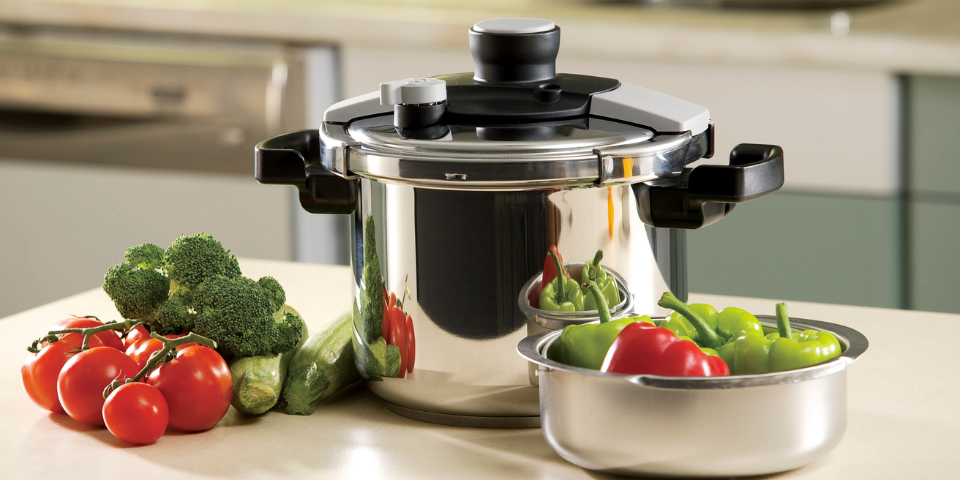Sluggish cookers and strain cookers are each helpful home equipment that may save plenty of time within the kitchen. Nevertheless, whereas a gradual cooker can take eight hours or longer to prepare dinner your meal, strain cookers will yield the same end in a fraction of that length.
We’re speaking beans going from dry to al dente in about an hour, a succulent roast at fork-tenderness in about 45 minutes, and artichokes in lower than 10.
So, for those who’re trying to reduce your cooking time and maximize taste, let’s study the variations between strain cookers and gradual cookers and what sort of strain cooker could also be best for you.
What Is a Strain Cooker and What Does It Do?
A strain cooker is an hermetic pot that makes use of steam strain to realize an inner temperature that’s a lot greater than different cooking strategies, which lets you prepare dinner meals in a short time. The steam comes from the liquids within the pot and retains your meals moist and tender.
Strain cookers have lids that seal shut and a valve that regulates strain, in addition to an indicator that tells you when it’s pressurized. The valve can be utilized to depressurize it — however extra on that later.
There are two kinds of strain cookers: countertop and stovetop.
Countertop strain cookers
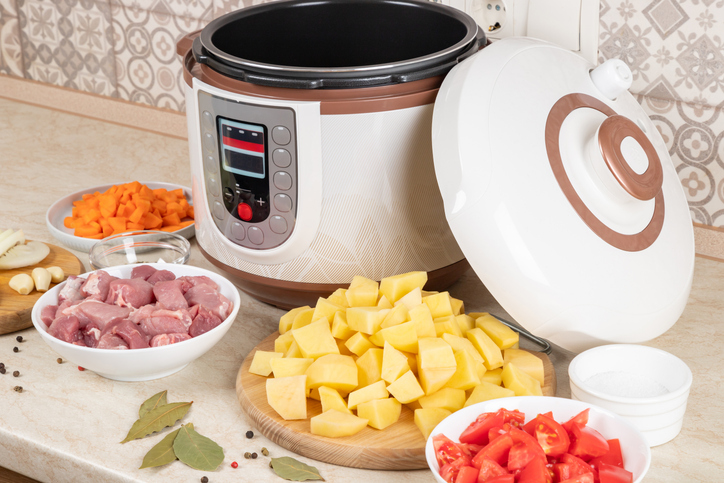
Countertop strain cookers are all-in-one machines (suppose Immediate Pots) which are higher for rookies or those that don’t have the time or inclination to get too concerned within the cooking course of. You possibly can merely sauté your elements (if desired), add liquid, put the lid on, set the cooking timer, and stroll away.
The timer gained’t begin till the pot is pressurized, which usually takes about 10 to fifteen minutes.
Stovetop strain cookers
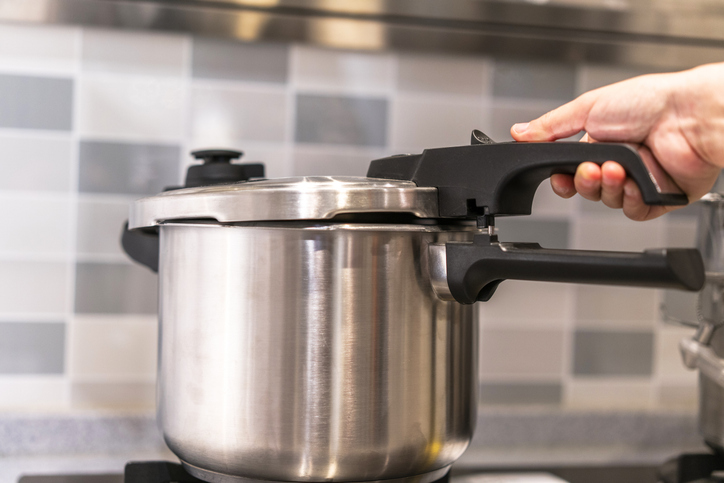
Specs between fashions of stovetop strain cookers differ, however typically, they’re normal pots with sealing lids that enhance the strain contained in the pot as soon as you place it on a burner. It’d take some observe to seal the lid correctly, so make certain to observe earlier than cooking whereas every little thing remains to be cool.
To make use of a stovetop cooker, put the pot over medium-high warmth and brown your elements, then add your liquids and seal. From there, it may possibly get slightly difficult: The warmth must be excessive sufficient to pressurize the pot, shortly after which you’ll have to show the warmth down.
How excessive or low to depart the warmth whereas pressurized takes some experimenting: too low and it’ll depressurize; too excessive and it’ll start spitting out steam.
As such, stovetop cookers are perfect for skilled cooks, cooks, and others who like having exact management over as many points of their meals as doable.
Strain Cooker vs Sluggish Cooker
Sluggish cookers simmer meals slowly at low temperatures (versus the roaring scorching boil of strain cookers) and have heavy lids that assist seal within the warmth and moisture, which leads to very tender meals.
Sluggish cookers usually include a ceramic or porcelain internal “pot” and two warmth settings — high and low. Relying on the mannequin, nevertheless, some might also embody completely different temperature settings and a timer so you’ll be able to set a particular cooking time.
Sluggish cookers are standard for making dishes like chili, soups, and stews, and so they’re identified for making powerful cuts of meat extra tender.
How you can Depressurize a Strain Cooker
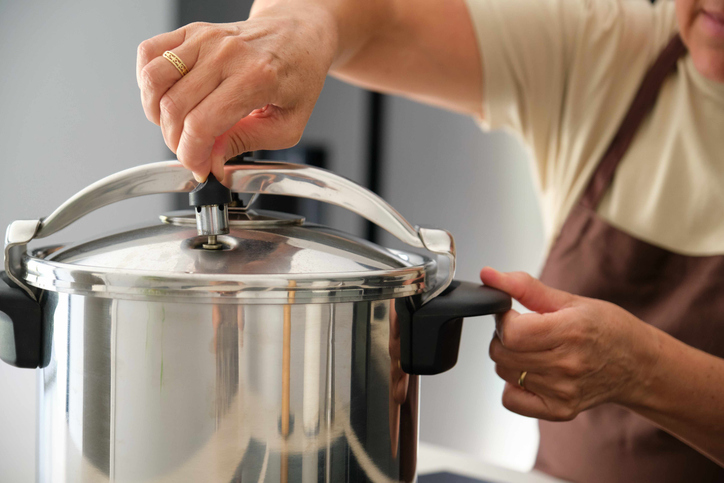
When your meals is completed cooking, you’ll have to take away it from the strain cooker, which requires depressurization. There are typically two methods to depressurize your strain cooker, however what you’re cooking will affect which technique you employ.
Let it depressurize by itself
This requires some persistence — as soon as the strain cooker is off, it takes about 10 to fifteen minutes to chill down, throughout which your meals will proceed to prepare dinner. This technique is often beneficial for meals like beans, meats, and soups and stews.
Notice: The meals will nonetheless be boiling scorching, so watch out once you take the lid off!
Manually depressurize it
You are able to do this by venting the pot, however be ready for the steam that may come out for anyplace from 5 to 10 minutes. This technique is NOT one you wish to use for those who’re cooking one thing that may foam up or enhance in quantity, reminiscent of beans or soups.
Ideas for Strain Cooking
Comply with these strategies to get probably the most out of your strain cooker.
1. Use flavorful liquids
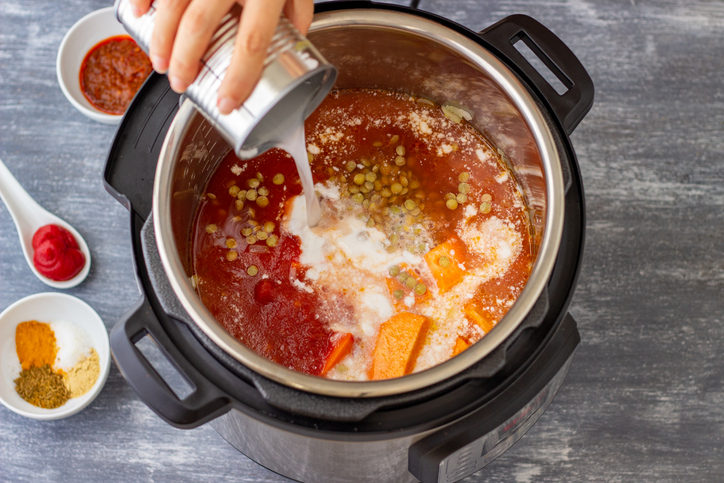
Along with water, you’ll be able to add in flavorful liquids like soy sauce, vinegar, tomato puree, wine, liquid aminos, or freshly squeezed juices from citrus fruits like lemon or lime.
Wherever from a teaspoon to a couple tablespoons is acceptable relying on what and the way a lot meals you’re making.
Notice: Acidic liquids can pace up cooking, so scale back cooking time by a number of minutes if utilizing.
2. Batch prepare dinner
You possibly can batch prepare dinner a number of breakfasts or meats to save lots of you time once you’re meal prepping for the week.
3. Go huge on spices
As a result of most strain cooker recipes contain water, don’t be afraid so as to add additional spices. This can be a nice alternative to make use of entire spices, as the extreme steam will draw extra taste out of them.
4. Use dried as an alternative of contemporary herbs
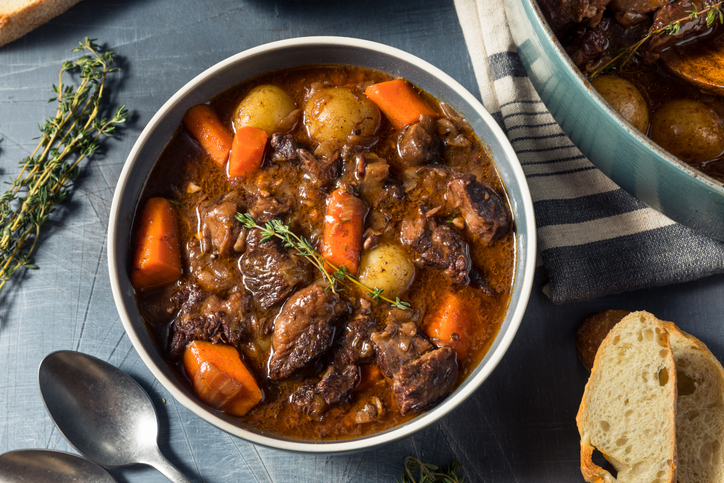
Recent herbs reminiscent of parsley and dill will get obliterated in a strain cooker. In order for you the flavour of herbs in your meal and wish to add every little thing at first, used dried herbs and save the contemporary herbs for garnishing.
5. Assume past dinner
You can also make every little thing from poached pears to pudding in a strain cooker, so maintain it in thoughts once you’re planning your meals for the week.
6. Preserve the bones in
Cooking with bone-in poultry and meats will yield richer, thicker sauce than proteins off the bone. Bonus? Bone-in meats are often cheaper than their boneless counterparts.
7. Decide the appropriate dimension
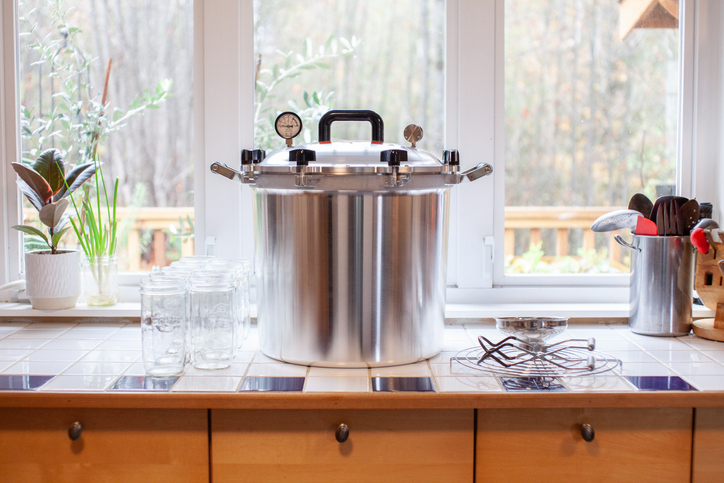
Strain cookers are offered in quart sizes: The smallest is 4 quarts, which is ideal for solo cooks.
Six- or eight-quart cookers are sufficiently big for a household meal, with the potential for leftovers. Should you’re cooking for an enormous crowd or utilizing recipes that require plenty of room, like bone broth, then the 10-quart cooker is for you.
The Backside Line
If listening to the phrase “strain cooking” fills your thoughts with pictures of exploding home equipment and stew throughout your kitchen partitions, banish these ideas.
Cooking with a strain cooker is a straightforward solution to create wholesome, flavorful meals in a brief period of time, whether or not you’re a beginner or a professional within the kitchen.

